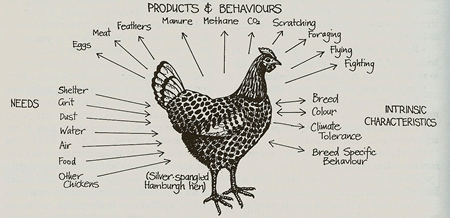A common permaculture principle - and one I employ constantly in my design work - is that any element of a system should serve multiple functions. Bill Mollison's classic example is of a chicken. Chooks provide eggs, meat, fertilizer, pest control, weed control and ground preparations.

Although we have chooks too, this post is about feijoas.

I reckon Kiwis know about feijoas but Yanks might not. So here's the background courtesy of...

The Feijoa (Feijoa sellowiana, synonym Acca sellowiana), also known asPineapple Guava or Guavasteen, is an evergreen shrub or small tree, 1-7 m in height. It comes from the highlands of southern Brazil, parts of Colombia, Uruguayand northern Argentina.

Our eight feijoas arrived Wednesday from the local garden center. On Tuesday, Dave the intern and I prepared the holes for them with plenty of compost and grass mulch that we harvested with the scythe. Mulch serves multiple functions such as: suppressing weeds, retaining soil moisture, adding nutrients and carbon to the soil as it decomposes.

We also use iron roofing as a temporary mulch. Since we have an abundance of it on this property, we often use it to edge a new garden to suppress the aggressive grasses that grow in this area.

Additionally, the roofing iron is preparing the next bed that will be planted in the lee of the feijoa hedge: a blueberry bed. While feijoas are wind tolerant, blueberries are not. So we have planted our feijoas in such a way as to form a wind break. Notice in the next picture that we have alternated bushy ones and treey (?!?) ones.

The feijoas will fill in to provide a future wind break for the blueberries, but also a privacy screen.

We do NOT want to put up tall iron fences like many of the local properties have. But the living feijoa hedge will act as a fence in some ways to define our property boundary, provide privacy, serve as a wind break, produce food for us, produce food for our flock, produce food for our neighbors, and enhance the beauty of the section.
So naturally, we want them to thrive. As with all plants, it starts with the soil. We have provided heaps of organic matter and compost at the roots, and mulched all around as mentioned above. Please also not the gentle bowl shape around the feijoa for easy watering. And never mulch up to the bark of a tree!

How shall I cook thee? Let me count the ways...

Peace...and feijoa wine! Estwing

No comments:
Post a Comment